|
||||||||||
|
NEW SCHOLARSHIPSymposium on Ernst BoerschmannEduard Kögel Director of the Ernst Boerschmann Research Project Berlin University of Technology (Technische Universität Berlin)
In Issue 24 (December 2010) of China Heritage Quarterly we introduced the work of the Research Project on Ernst Boerschmann at Berlin University of Technology under the direction of Eduard Kögel. Dr Kögel has been kind enough to report on the proceedings of the conference devoted to Ernst Boerschmann and held in Berlin in January 2011.—The Editor 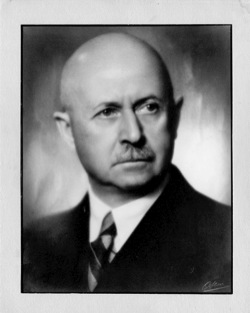 Fig.1 Ernst Boerschmann in Shanghai (1934). A two-day international symposium on 'Ernst Boerschmann and Early Research in Traditional Chinese Architecture' was held at the Habitat Unit of the Berlin Institute of Technology on 13-14 January 2011. The organiser, and author of the present report, using funding provided by the German Research Foundation to pursue research on the work of Ernst Boerschmann (1873–1949) in China. He launched the symposium by introducing the findings of his research on the combination of religion and architecture in the photographer's work. In a lifetime of work Boerschmann collected and classified various kinds of architecture according to its form, function and ritual uses. Between 1911 and 1931 he published seven books on different aspects of Chinese architecture. The most important focus in his later work being pagodas, as the last book he published in 1931 shows. In the second paper, Hartmut Walravens spoke about the unpublished second volume of Ernst Boerschmann's book on pagodas. Although the manuscript was completed by around 1942 (during the WWII), a lack of funding brought the project to a halt. After Boerschmann's death in 1949, his son tried to find a publisher, but the printing costs were regarded as prohibitive. Subsequently, the manuscript was lost, although substantial fragments are known about today. Unfortunately, the illustrative material for the book was also lost and not even a list of these materials been found. Hartmut Walravens showed how Boerschmann built on the work of other researchers and how he worked with what would be today called a multidisciplinary team, using translations of texts from Tibetan, Mongolian, Chinese and other languages. Almost ten years of work went into his first book on pagodas. For the second volume, Ernst Boerschmann had travelled through China country again between 1933 and 1935 to check his data on the various sites. The material collected, including local gazetteers and descriptions, as well as recorded oral history accounts of interviews with the monks in the attached temples were all used as a basis for the book. This information was combined with measurements of the on-site buildings, mostly undertaken by Boerschmann himself. On some, rare, occasions he also asked other researchers, like the German art historian Gustav Ecke (1896–1971), to make measurements for him. Walravens' lecture made it clear that a lot of passion and dedication will be required for the reconstruction the second volume of Boerschmann's pagoda project. Hopefully this will be possible in the near future. 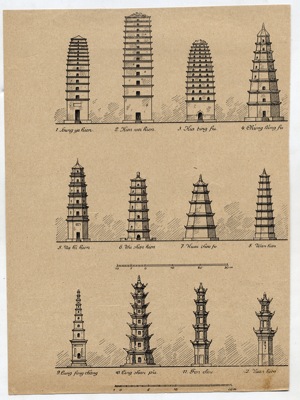 Fig.2 Comparing drawings of pagodas (after 1940, unpublished). © Ernst Boerschmann 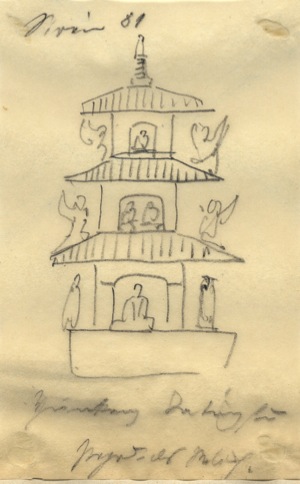 Fig.3 Sketch of a pagoda after a photo published by Oswald Sirén. © Ernst Boerschmann In his paper Wang Guixiang from Tsinghua University in Beijing focused on the achievements of Liang Sicheng (1901–1972) and the Society for Research in Chinese Architecture after 1931. Liang Sicheng, Lin Huiyin (1904–1955) and Liu Dunzhen (1897–1968) were the first Chinese scholars to use fieldwork as a method of research into the country's architectural heritage. In the years between 1931 and 1937, they identified the most important historic buildings in the northern part of the country. Liang focused on timber construction and the impact of the Song-dynasty building manual Yingzhao Fashi (dated from 1103CE). On this basis of this work they were able to make ground-breaking analyses of the development of Chinese architecture that remains basic in academic research today. Although Ernst Boerschmann and Liang Sicheng meet in Beiping (modern-day Beijing) twice in 1934, not much is known about their relationship. Wilma Fairbank once wrote that Liang did not like Boerschmann's approach, but, in contrast, we also know that Boerschmann fulsome in his praise of the Chinese approach in the 1930s. He had hoped to be able to collaborate in research projects with younger his Chinese colleagues, but political developments in the late 1930s prevented this. From Wang's talk we learned that only little is known in today's Chinese academic world about Boerschmann's work. In most cases he is only recognised for his popular 1923 book Picturesque China. In his lecture, Ho Puay-peng from the Chinese University of Hong Kong compared the approach of the Danish architect Johannes Prip-Møller (1889–1943) in relation to Buddhist architecture with the methods employed by Ernst Boerschmann. Prip-Møller travelled through China over a number of years in the late 1920s and early 1930s in order to learn more about Buddhism and its architecture. In the early 1920s he was an architect for the Christian Mission in North China and as such had accumulated considerable practical experience before launching his own research work. Both Boerschmann and Prip-Møller not only documented the buildings they studied but also the interiors, the rituals and the daily life associated with them in sketches, diaries, drawings, photos and measured plans. The intimate photos they made show the close relationship both men had with local residents in the temples. Their documentation goes far beyond mere architecture to include social, religious and ritual activities. Shortly before Prip-Møller published his results in a major book on Buddhist temples in 1937, he contacted Ernst Boerschmann to discuss certain details with him. They later met in Denmark and Berlin, hoping to work together on future projects. Again political developments and the untimely death of Prip-Møller in 1943 prevented a collaborative project. Hirase Takao from Tokyo University and Xu Subin of Tianjin University talked about the research in China of the Japanese scholar Sekino Tadashi 関野貞 (1868–1935) during the 1920s and 1930s. Hirase and Xu themselves had travelled around to visit and photograph the sites and places originally documented by the Japanese scholar. In many cases, things have changed dramatically. Hirase is working on the digitalisation of Sekino's original photographs in order to present the material in an online database. Xu's paper gave some subtle hints of the nationalistic character of the Japanese research in that period. A similar motive can also be detected in Ernst Boerschmann's work, especially that made prior to WWI in the context of the 'imperial dreams' of the then German Empire. On Friday 14 January, Ernst Boerschmann's grandson, Ernst–Christian Boerschmann, gave a short, personal overview of the family's history and the fate of his grandfather's papers following his death in 1949. Many manuscripts and documents disappeared due to the fact that his father—like his grandfather—welcomed other researchers' to use the archive. Some of them did not return the borrowed materials and bit-by-bit the private archive shrank. Today only some of the original materials are in public archives, such as the University in Cologne. 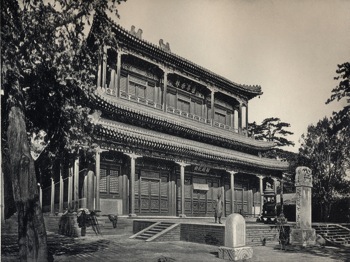 Fig.4 Main hall at Jietai Si in Western Hills of Beijing (no longer extant). © Ernst Boerschmann 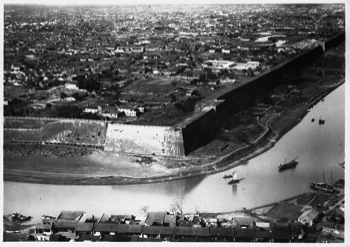 Fig.5 Corner of the city wall of Nanjing (1934). © Ernst Boerschmann Alexandra Harrer from University of Pennsylvania gave a vivid description of Western architects' and scholars' knowledge of Chinese architecture prior to the time of Ernst Boerschmann, focussing in particular on the eighteenth and nineteenth centuries between the 'eras' of the Rococo and Historicism. Harrer's paper showed the problems people had in understanding Chinese timber construction based on the then available sources. European scholars relied on their imagination to form an overly simplistic image of the complicated structures of traditional Chinese architecture. The images of missionaries and early first artists inspired fantastical conceptions of Chinese architecture. In the light of nineteenth century knowledge and misinterpretations, Ernst Boerschmann's approach in the early twentieth century appears nothing short of revolutionary. Eva Sternfeld from Centre of Cultural Studies on Science and Technology in China at Berlin Institute of Technology spoke about the observations Ernst Boerschmann made regarding water use during his travels. One article written and published in 1913 focused in particular on river irrigation and the construction of dams and canals. Sternfeld used the example of the irrigation system at Dujiangyan in Sichuan, which Boerschmann visited in 1908, to explain the nature of communal and collective efforts of water management. Using Boerschmann's work Sternfeld illustrated how he was sensitive to water as the basis for agriculture and flood mitigation. Martin Hofmann from the department of East Asian Intellectual History at Heidelberg University focused on Zhu Qiqian (1872-1962), the founder of the Society for Research in Chinese Architecture in 1930. This visionary political figure was shown in the light of his revolutionary work to establish architecture as a serious field of study by Chinese scholars. His approach encompassed far more than architecture and included other crafts and craftsmanship. Zhu Qiqian's initial goal to complete research into the history of Chinese architecture within a ten-year period, gives us some idea about the lack of knowledge on the subject at the time. Chang Qing from Tongji University in Shanghai could not personally attend the symposium. In his place, his assistant Tang Jiaqiong presented details of a practical project: the reconstruction of the Potala in Shigatse (日喀则 in Chinese) in Tibet. The building, known as the Samdrubtse Dzong and demolished during the Cultural Revolution (1966–1976), was over than three hundred years older than the Potala in Lhasa. Tang showed the reconstructed building on the top of a local bluff in the city. It is now predominantly a tourist site and a local landmark. Religion has been relegated to a minor role. Historic documents were used for the reconstruction allowing for the finished produced to appear in the guise of a traditional structure, even though the new building is made of steel and concrete and steel. Boerschmann never travelled to Tibet, but this example showed how valuable his materials could potentially be for other reconstruction and restoration projects. 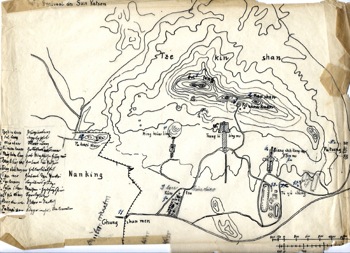 Fig.6 Sketch of the mausoleum of Sun Yat-sen in the regional context of Nanjing. © Ernst Boerschmann Guo Qinghua from University of Melbourne presented a paper on analyses of architectural details on bronze vessels of the Warring States period (475-221BCE). Only twenty of the surviving bronze vessels display architectural elements, among other scenes. This is the earliest record of architecture in Chinese history. Through the documentation and interpretation of graphics on bronze vessels, Guo is helping develop a new field that promises further knowledge about the roots of Chinese architecture. The director of the Asian Art Museum in Berlin, Klaas Ruitenbeek, discussed the organisation and logistics of imperial building projects in Ming and Qing dynasty Beijing. As an example he presented the reconstruction of the Three Halls (the Qianqing Gong, Jiaotai Dian and Kunning Gong) in the Forbidden City following the devastating fires of 1596 and 1797. Both projects are well documented in archival sources. The projects were based on a strict regime of cost calculation, logistics and prefabrication, which adhered to clearly defined standards. In his paper, Ruitenbeek showed the structure, economics, management and building process involved in each case. When Ernst Boerschmann travelled around China for the first time between 1906 and 1909, the Qing Dynasty was still in power. He very much regretted that he was unable to establish contact with the official state architects to learn more about their regulations and guiding concepts. 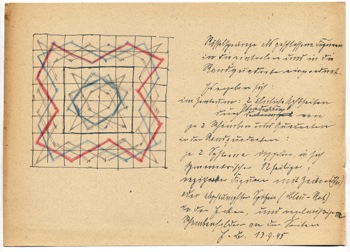 Fig.7 Sketch of the symbolic structures underlying Buddhist architecture, dated 13 September 1945. © Ernst Boerschmann The symposium not only covered aspects of research in the particular context of Ernst Boerschmann, but also focused on research into Chinese architectural history in general. It showed some interactions between research and interpretation of Chinese architecture with the background of political history at the time of research. Therefore the results and (partial) misinterpretations can be seen today as part of a developing knowledge, in a field of common interest that lacks a proper basis. In the early part of the twentieth century it was very difficult for Western scholars to find the correct answers. Nevertheless, Boerschmann's fieldwork, which included site surveys and early professional photographs, made an important contribution to establishing a history of Chinese architecture. The symposium made it clear that Ernst Boerschmann's documentation could help scholars understand the origins of modern research into Chinese architecture, especially in the context of the original function and use of buildings. In addition, the many photographs and plans he made are important artefacts of a world that disappeared soon thereafter. Although Boerschmann made mistakes in some of his interpretations, he was sometimes the last scholar able to record on the ground sites and behaviours in what was a rapidly changing society, in particular one that unfolded following the abdication of the Qing Xuantong emperor in 1911. Boerschmann's research into landscape and religion has left a rich resource for the understanding of a defunct society. In many historic buildings only the basic elements of the original structure are left today, even these are imperilled by well-intended but ill-advised restorations. We are now working on the documentation of all the buildings visited and recorded by Boerschmann as part of an endeavour to make his work accessible to other scholars. Related material from China Heritage Quarterly:
|